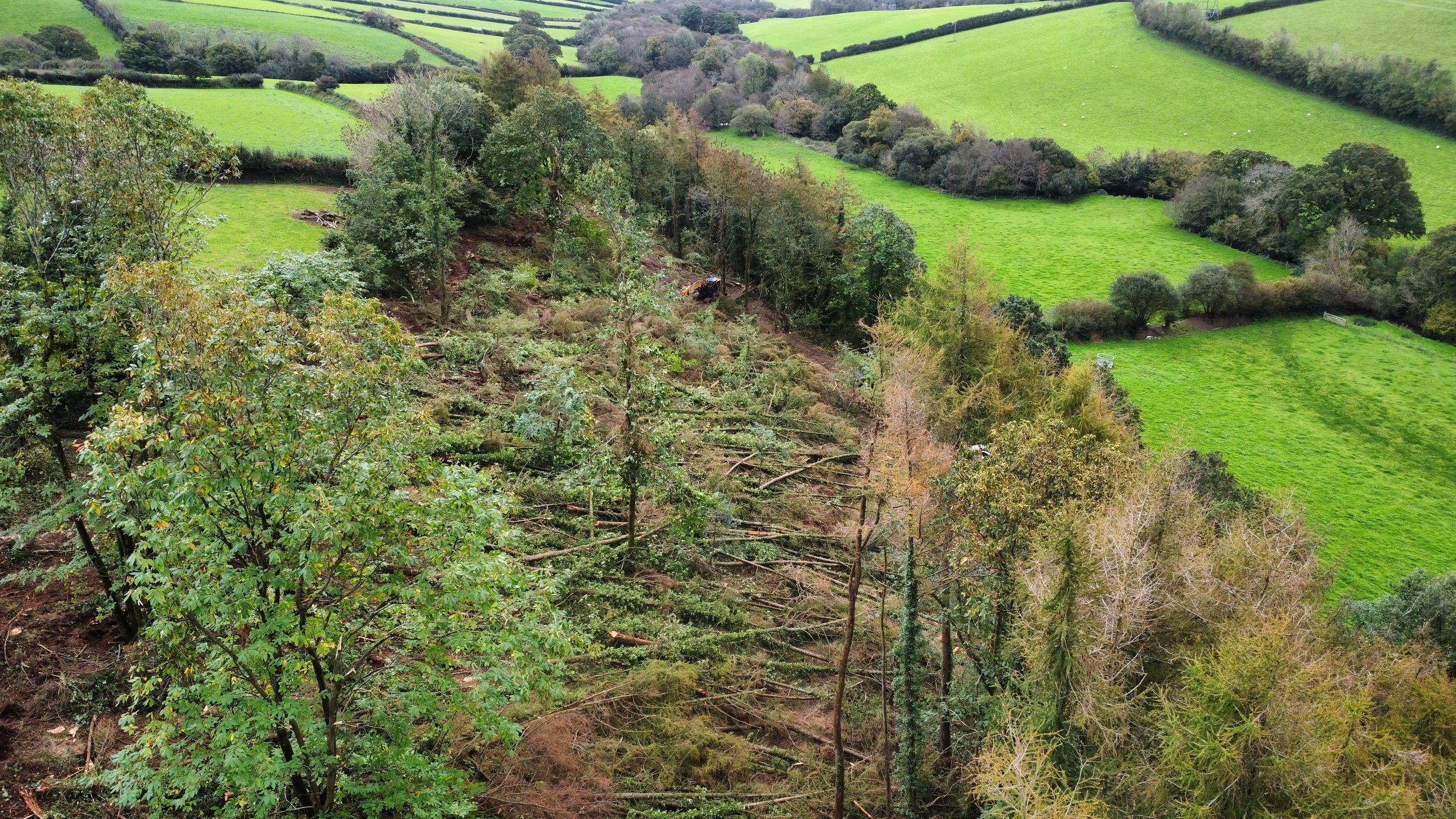
Delivering efficient, cost-effective and environmentally sensitive forestry solutions in the South West.
Forestry Services
Clear Fell
The practice of clear felling involves felling most or all of the trees within a designated area. The trees are cut down leaving the area clear for re-planting with a species offering more biodiversity net gain, or restocking a new crop for future harvesting. Timber can then be harvested for sale and arisings can either be windrowed, spot piled or chipped.
Selective Species Felling
We identify, mark and selectively fell a particular species within a forest or woodland for a variety of reasons. Often certain species are removed for bio-security measures when a disease is present. It can also be used to encourage slower growing broadleaves such as oak, once established and the cover of faster growing species is no longer required.
Timber Harvesting
Assorted works including: thinning, selective species felling and removal of wind-blown and dead and dangerous trees. Efficient timber extraction and waste transport.
We harvest timber using our Valtra Tractor and Low-impact 2.7t Excavator with forestry crane and grab, timber trailer and winch set-up.
Thinning
Woodland thinning is a forestry practice that involves selectively removing a portion of trees within a forest or woodland area to improve the health and growth of the remaining trees. Thinning is typically done to reduce competition for resources such as sunlight, water, and nutrients, allowing the remaining trees to grow larger and healthier. This practice can also enhance biodiversity, promote wildlife habitat, and reduce the risk of pests and diseases. Thinning is carried out in accordance with sustainable forest management principles to maintain the long-term productivity and ecological integrity of the forest ecosystem.
Site Clearance
Site clearance of trees or vegetation involves the complete removal of all trees, shrubs, and other vegetation from a designated area of land. This process is typically done to prepare the site for construction, agriculture, or other activities. Site clearance may include tree felling, stump removal, and clearing of brush and debris. Once cleared, the site can be graded and prepared for its intended use.
Reforestation
Our reforestation practices involve replanting woodlands with either native broadleaf species which provide a higher level of biodiversity or alternatively, re-stocking a site with new crop for future sustainable timber harvesting. We plant with bare-root stock sourced from independent growers in the UK and use biodegradable guard systems to mitigate loss on re-stocking. We also offer 3, 5 and 10 year management plans following planting to ensure the future health of the forest or woodland.
Horse Logging
The Wild Arborist Shire horse, Alfred, is 5 years old and currently in training to be a fully-fledged logging horse. The shire currently working with the Wild Arborist team is Jackson - a 17-year-old veteran horse logger owned by Keith & Carolyn Trickey. Keith, although retired from full-time logging now, used to do much of the horse logging for the Duchy, National Trust, and many other landowners along with his wife, Carolyn.
Why are horses used in forestry?
Horses are well suited to horse logging due to their agility, low environmental impact, and ability to work in challenging terrain where heavy machinery might struggle. Their lighter footprint helps preserve the woodland ecosystem, making them a sometimes preferable choice for logging operations over machinery. Additionally, horses can navigate through dense forests without causing as much damage to the surrounding vegetation compared to heavy equipment. Although taking longer to carry out forestry operations, the cost comparison works out roughly the same as machinery or in some cases, it can be a more cost-effective option.










